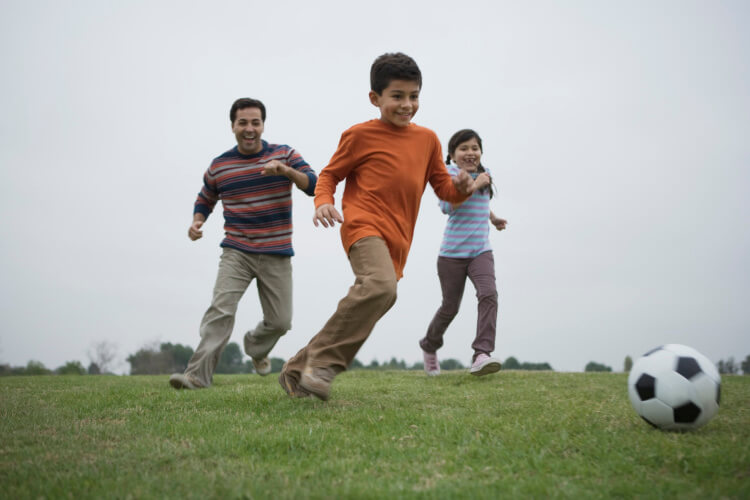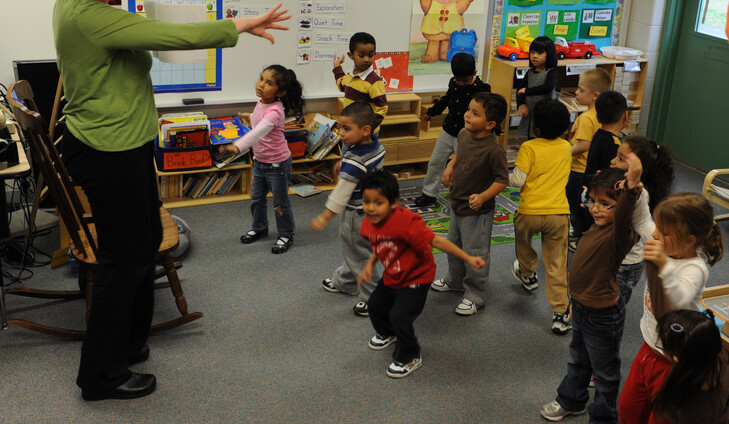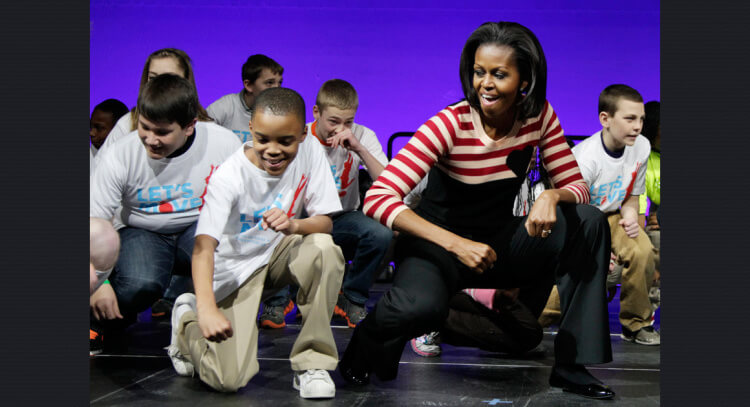To support a student’s physical literacy journey, health and physical education teachers need to consider and use all the skills and resources at their disposal. By effectively doing this, teachers can create learning environments that enhance their students’ development of physically active and healthy lifestyles. Additionally however, we believe that to provide students with the wide range of experiences vital to creating the necessary levels of confidence, self-efficacy and motivation for students to choose physically active and healthy lifestyles, teachers also need the critical support of many others.

A wide range of teaching issues including planning, lesson delivery, and assessment impact the success of health and physical education teaching. Less often considered is the importance of role modeling. According to Cardinal and Cardinal (2001) role modeling is a powerful teaching tool. However, getting students to choose to be physically active and healthy depends on more than just good role modeling by health and physical educators. This critical lifestyle choice needs to be supported schoolwide, in students’ homes, and across the community. Within these different environments students face choices that will impact their physical activity and health habits. Consequently, in order to develop physical literacy through physically active and healthy lifestyles, it’s critical students are exposed to positive role models throughout their entire “community”.
Understanding “Community”
When trying to understand the composition of a student’s “community”, it’s important to consider who students are in regular contact with daily. In addition to health and physical educators, students spend a considerable amount of time each day with other teachers and school employees, family, and their extended community of peers and adults. Below, we examine the possible role and impact of each of these “players” within a student’s “community.”
Teachers
Health and physical education teachers have the knowledge and skills to be one of the most important building blocks of the educational system (Yilmaz, 2011). Those who take pride in being physically active and constantly demonstrate healthy choices influence students positively. Conversely, when students believe the teacher does not model the information taught, students sometimes have a difficult time valuing knowledge (Dean, Adams, & Comeau, 2005). The authors concluded, “…whether they like it or not, physical educators must view themselves as role models.”
Bradford, Hickson, & Evaniew (2014) identified the issue of teacher as a role model as being a powerful influence in supporting physically active and healthy lifestyles. Therefore, the actions of teachers of health and physical education seem to be just as important as the material being taught. So for example, health and physical education teachers take pride in being physically active, they can successfully influence students to follow their example (Fishburne 2005; Pangrazi & Beighle, 2013).
Schools
Although it is important for teachers of health and physical education to be aware of the importance of role modeling, it is also equally important that others within the school environment do so too. In order to support physical literacy and physically active and healthy lifestyle choices, and to reach the goal of 50 Million Strong by 2029 – getting every student choosing to be physically active and healthy – every school staff member has a part to play.

Just as health and physical educators need to support literacy and numeracy, so too must our language arts and mathematics teachers support physical literacy. Health and physical educators need to work with staff members throughout their schools to communicate the importance of role modeling physically active and healthy behaviors. For example, the type of food or drink being consumed by a teacher when walking down the hallway between classes is often observed by students. All teachers need to be aware that their behaviors risk creating mixed-signals from what is being taught by others in terms of healthy food and drink choices (Hickson & Bradford, 2010).
Home
In addition to teachers, some of the most powerful role models for students include their parents/guardians and extended family members. As we suggested in a recent PHE America article entitled, Physical Literacy and Enjoyment: The Route to 50 Million Strong by 2029! (Hickson, Bradford, & Evaniew, [December] 2015), a universal “buy-in” to the importance of physically active and healthy lifestyles is critical. This universal “buy-in” must extend beyond the walls and playgrounds of our schools and into the homes of students.
By engaging parents/guardians and other family members in understanding their importance in role modeling physically active and healthy lifestyles, health and physical educators can extend the learning environment to student homes. As a result, students will be exposed to continued conversations and experiences that support physically active and healthy lifestyle choices and promote physical literacy.
There are many ways health and physical educators can do this. For example, providing ideas to parents/guardians as to how they can be active as a family, supplying contact information about free community activity programming, and creating events where students and their family members can be active together (e.g., a community Zumba event, charity walks, etc.) can elevate parents’/guardians’ role modeling to their children reinforcing the value, benefits, and enjoyment of being physically active and healthy.
Extended Community
Similar to the way in which sport stars are often seen by young people as role models, community members can be influential, too. For example, seeing a senior citizen complete a marathon, perform the waltz at a wedding, or swim laps at our local pool, is positive role modeling. Seeing others being physically active sends our students an important message: There are opportunities everywhere for all of us to choose physically active and healthy behaviors. As a health and physical education teacher, we encourage you to point out to your students examples of people in your community who exhibit the health-promoting behaviors you are teaching your students.

You are probably familiar with schools that invite members of the community to assist with reading programs. There’s no reason you could use a similar strategy to help develop physical literacy. You could for example, ask skilled community members to assist when teaching dance or to expose students to a new physical activity thereby extending your “community” of role models. When students have the opportunity to observe and participate alongside community members in physical activities, it exposes them to the potential of life-long physical activity that supports a healthy and enjoyable lifestyle.
Concluding Thoughts
To support the development of physical literacy through physically active and healthy lifestyles, we encourage you to consider providing a “friendly nudge” and guidance to enhance awareness among the entire school staff, parents/guardians, and community members to their role modeling potential and responsibilities. Of course this will mean that health and physical educators will likely have to be innovative and creative in helping colleagues, parents/guardians, and others learn more about being role models of physically active and healthy lifestyles.
The sedentary and unhealthy lifestyle challenge in front of us is without a doubt large, but certainly not beyond what together we can achieve. We must continue to strive to discover strategies to help reduce sedentary life choices and promote physically active and healthy lifestyles. Role modeling is one such possible strategy. As teachers, we are all in a position to help motivate our whole “community” to become more physically active and healthy and to role model such values and behaviors. By creating a whole “community” of role models, we believe health and physical educators can play an important part in helping students live physically active and healthy lifestyles, which would be a major step toward succeeding with the goal of 50 Million Strong by 2029.
References
Bradford, B.D., Hickson, C.N., & Evaniew, A.E. (2014). Role Modeling: The Forgotten Part of Elementary School Physical Education. Journal of Higher Education Theory and Practice. 14(5), 18-23.
Cardinal, B.J. & Cardinal, M.K. (2001). Role modeling in HPERD: Do attitudes match behavior? Journal of Physical Education, Recreation & Dance. 72(4), 34-39.
Dean, M.B., Adams, T.M., & Comeau, M.J. (2005). The effect of a female physical educator’s physical appearance on physical fitness knowledge and attitudes of junior high students. The Physical Educator, 62(1), 14-25.
Fishburne, G.J. (2005). Developmentally appropriate physical education for children and youth. University of Alberta: Ripon Publishing.
Hickson, C., Bradford, B., & Evaniew, A. (December 2015). Physical Literacy and Enjoyment: The Route to 50 Million Strong by 2029! PHE America Website. http://www.pheamerica.org/2015/physical-literacy-and-enjoyment-the-route-to-50-million-strong-by-2029/
Hickson, C. & Bradford, B. (November 2010). Healthy, Active Messages: What Are We Telling Our Students? P.E.Links4U Physical Education Website. http://www.pelinks4u.org/articles/hick_brad_1210.htm
Pangrazi, R. P., & Beighle, A. (2013). Dynamic physical education for elementary school children. (17th Ed.). New York, NY: Pearson.
Yilmaz, A. (2011). Quality problem in teaching profession: Qualities teacher candidates feel to be required of teachers. Educational Research and Reviews. 6(14), 812-823.
